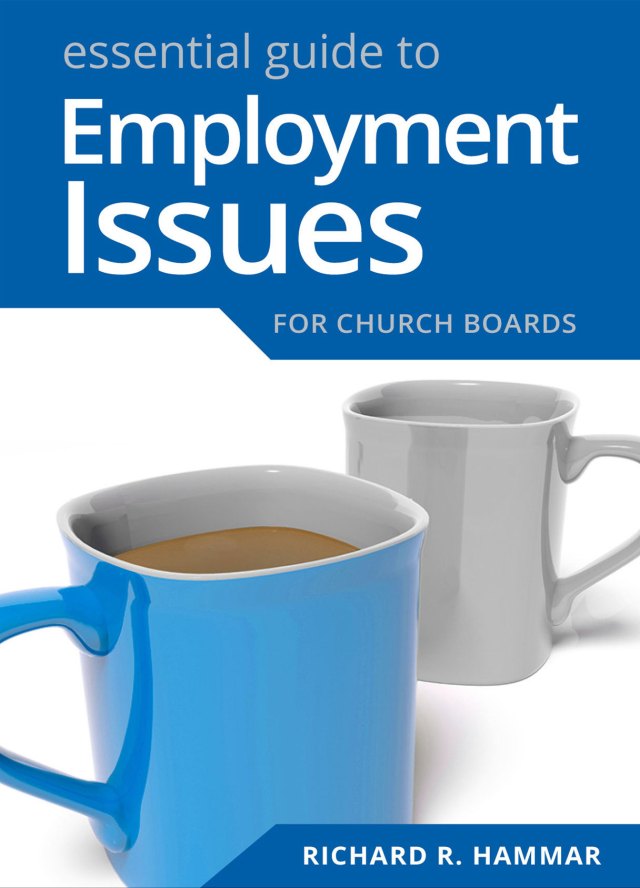Key Point 8-11. Employees and applicants for employment who believe that an employer has violated a federal civil rights law must pursue their claim according to a specific procedure. Failure to do so will result in the dismissal of their claim.
Key Point 8-13. The federal Age Discrimination in Employment Act prohibits employers with 20 or more employees, and engaged in interstate commerce, from discriminating in any employment decision on the basis of the age of an employee or applicant for employment who is 40 years of age or older. The Act does not exempt religious organizations. Many states have similar laws that often apply to employers having fewer than 20 employees.
Resource. For more information on this topic, purchase the download, “Understanding Wage and Hour Laws” on ChurchLawAndTaxStore.com.
A federal court ruled that a 56-year-old woman failed to establish that a church-operated school committed unlawful age discrimination when it rejected her application for employment as a teacher and instead hired a 21-year-old woman for the position. To fill a vacancy for a third-grade teacher position the school placed an advertisement in an online job bank. It received six applications for the position, one of which was from a 56-year-old woman (the “plaintiff”). All six applicants were interviewed, and school officials and church leaders chose a 21-year-old female applicant. This prompted the plaintiff to sue the school, and church, for age discrimination in violation of the federal Age Discrimination in Employment Act (ADEA). The ADEA prohibits employers with 20 or more employees, and engaged in interstate commerce, from discriminating in any employment decision on account of the age of an employee or applicant for employment who is at least 40 years of age.
The court noted that a “burden shifting analysis” must be used in evaluating age discrimination claims. This analysis involves the following four steps:
- First, the plaintiff must prove a “pri-ma facie case,” which consists of the following elements: (1) the plaintiff is at least 40 years of age; (2) she applied for a position for which she was qualified; (3) she was subject to an adverse employment decision, such as termination or not being hired; and (4) the adverse employment decision was made under circumstances giving rise to an inference of unlawful discrimination.
- Second, if the plaintiff establishes a pri-ma facie case, the burden shifts to the defendant to produce evidence of a legitimate, nondiscriminatory reason for its decision not to hire the plaintiff that rebuts the presumption of discrimination created by the plaintiff’s pri-ma facie case.
- Third, should the defendant produce such evidence, the burden shifts back to the plaintiff to show both that the employer’s purported reason is mere pretext for discrimination and that the plaintiff’s age was the actual motivating factor behind the defendant’s hiring decision.
The court noted that “a plaintiff’s burden in proving a pri-ma facie case is minimal,” and that the plaintiff had done so. This meant that the burden shifted to the church defendants to produce evidence of a legitimate, non-discriminatory reason for not hiring the plaintiff. The court concluded that the church defendants met this burden by establishing that the plaintiff’s interviewers were dissatisfied with her interview performance, and in particular her responses to questions concerning lesson plans and classroom discipline.
The court stressed that “an employer may use subjective criteria, such as the employer’s impressions of job applicants during an interview, to make hiring decisions,” and that a court “must respect an employer’s unfettered discretion to choose among qualified candidates” and “not act as a super personnel department that second guesses employers’ business judgments.”
Since the church defendants met their burden of proving a legitimate, nondiscriminatory basis for the decision not to hire the plaintiff, the burden shifted back to her to prove that this purported basis was a “pretext” for discrimination and that her age was the real reason she was not hired. The court concluded that the plaintiff failed to meet this burden, and it dismissed the lawsuit. It noted that her only evidence of discrimination was the age difference between her and the 21-year-old applicant who was hired. But this evidence, without more, “does not contradict the evidence of plaintiff’s poor interview performance or show that this lawful excuse concealed a hiring decision motivated by unlawful discrimination.” A plaintiff in an age discrimination case “may not rely on conclusory allegations or unsubstantiated speculation.”
Application. This case illustrates an important point—churches subject to the ADEA (or a state counterpart) do not necessarily commit age discrimination by failing to hire the oldest applicant for a position. They will avoid liability if they can prove a legitimate, nondiscriminatory reason for their decision that is not a “pretext” to conceal an actual discriminatory intent. Donahue v. Norwich Roman Catholic Diocesan Corporation, 2008 WL 821890 (D. Conn. 2008).
This Recent Development first appeared in Church Law & Tax Report, September/October 2009.
